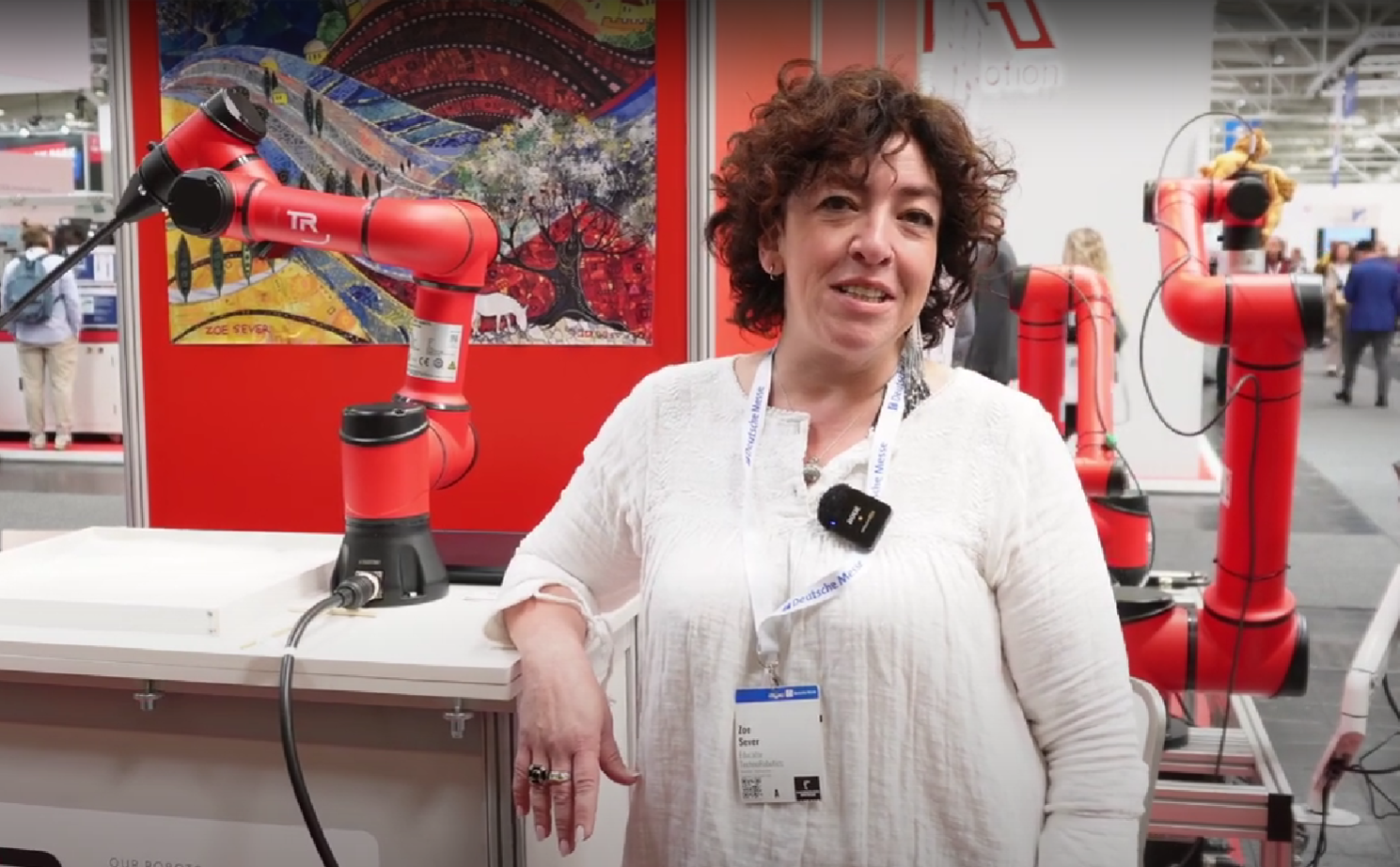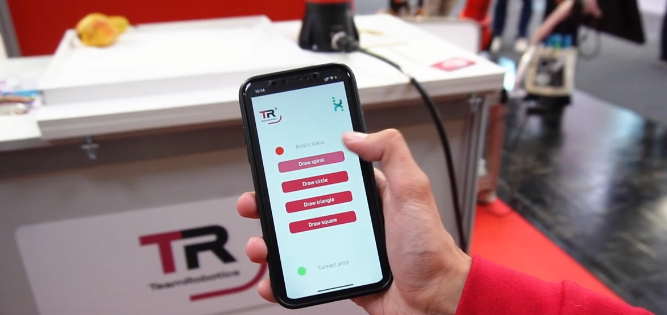
Imagine walking into an art gallery and seeing a robotic arm carefully sculpting beautiful sand paintings, only for these creations to be gently erased by human hands. This captivating dance of creation and destruction is more than just a show; it’s a deep reflection on the relationship between humans and technology. This is exactly what the ART&TECH initiative has brought to life powered by PLCnext Technology. ART&TECH: Innovation meets creativity!
The project: A fusion of art and robotics
The ART&TECH project is the brainchild of artist Zoe Sever and Marina Fliamer, founder of Technorobotics. Based on Zoe Sever’s famous work “A Star Above Jerusalem”, the project explores themes like celestial harmonies, mysterious symbols, and the soul’s journey using gold, crimson, and blue colors.
The installation features a stunning performance where a robotic arm brings Sever’s symbols to life, only for them to be erased by human hands. This switch in roles — where the machine creates and the human destroys — reflects the deep connection between artistic creativity and complex programming.

Practical implementation by PLCnext Control
PLCnext Technology is at the heart of this project. Our open automation platform integrates traditional PLC functions with high-level languages, IoT applications and cloud connectivity. PLCnext Engineer’s built-in web HMI enables real time status updates, algorithm management and task assignments – all from a smartphone. This level of control and flexibility was crucial for the ART&TECH project, which required precise synchronization between the robot arm and other machines.
Traditionally, the direct integration of a robot and a machine without an additional PLC is feasible for simple applications. However, the operational complexity of the ART&TECH project required improved safety, scalability and digital factory integration. PLCnext Technology therefore served as the central orchestrator for the entire network, ensuring that each component excelled in its domain while contributing to the overall efficiency and productivity of the robot cell.
Why PLCnext Technology?
The decision to use PLCnext Technology was driven by several key advantages:
- Flexibility and scalability: PLCnext Control’s robust and flexible architecture allowed for seamless integration of various components, ensuring the system could adapt to future technological advancements.
- Safety protocols: Comprehensive safety protocols safeguarded both machinery and human operators, allowing for real-time decisions and actions.
- Industry 4.0 integration: PLCnext Control facilitates seamless integration into Industry 4.0 ecosystems and enables predictive maintenance and monitoring in smart manufacturing environments.
- Wide array of communication protocols: Support for digital I/Os and sophisticated network protocols such as Modbus ensured efficient data aggregation, processing, and communication.
Feel welcome to read more about our PLCnext Control, the hardware for the ecosystem PLCnext Technology powered by Phoenix Contact.




